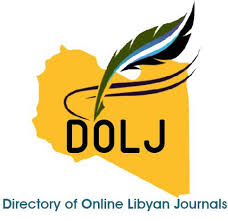CONVERSION OF LAPAROSCOPIC TO OPEN CHOLECYSTECTOMY
DOI:
https://doi.org/10.54361/Ljmr18-1.23Keywords:
Laparoscopic cholecystectomy, , open cholecystectomy, gall bladder stones, cholelithiasisAbstract
Background: Globally, gallstone disease (GS) is a significant health issue, especially for adults although cholecystitis is common, there is an evidence of variance in its diagnosis and course of therapy, including surgery. In place of open cholecystectomy, laparoscopic cholecystectomy is now the preferred course of treatment for symptomatic cholelithiasis. In situations where laparoscopic cholecystectomy is dangerous; a surgeon may be forced to change from laparoscopy to an open procedure. The aim of the study was to clarify the benefits and role of minimally invasive surgery in comparison to the open conventional method of cholecystectomy, with a focus on the postoperative phase and to compare the ratio of Laparoscopic and open cholecystectomy between male and female genders. Methods: 185 Patients of cholecystitis aged between 10 years to 80 years (86.5% males and 13.5% females) were presented to Zawia Medical Center during the period from March 2005 till April 2006 that randomly get an open or laparoscopic cholecystectomy. They were divided into open and laparoscopic Cholecystectomy group. Results: In this study, a total of 185 patients were included: 160 females (86.5% of the total) and 25 males (13.5% of the total). Whereas, 86 females (53.7%) were operated on by laparoscopic cholecystectomy, and 74 females (46%) were operated on by open cholecystectomy. In comparison, of a total of 25 males, 12 (48%) underwent laparoscopic cholecystectomy and 13 (52%) underwent open cholecystectomy. The conversion rate was eight cases (8.2%) due to technical, bleeding, or massive adhesion. Conclusion: From this study, we concluded that the laparoscopic cholecystectomy versus open cholecystectomy ratio (female: male ratio) was 86.5% to 13.5% of the total 185 patients, and laparoscopic cholecystectomy appears to be a safe procedure with quick recovery, early discharge from the hospital, and less postoperative pain as compared to open cholecystectomy.
Downloads
References
- Factors for Intra and Postoperative Complications. Medicina (Kaunas); 57(3): 230.
- Alkatout I , Mechler U , Mettler L , Pape J , Maass N , Biebl M , Gitas G , Laganà AS , and Freytag D . (2021) the Development of Laparoscopy—A Historical Overview. Front Surg. 8: 799442.
- Agrawal R, Moorthy K. and Darzi A. (2004) Laparoscopic skills training and assessment. Br. J. Surg. 91: 1549-1558.
- Sureka B and Mukund A. (2017) Review of imaging in post-laparoscopy cholecystectomy complications. Indian J Radiol Imaging. 27(4): 470–481 Pisano M, Allievi N, Gurusamy K, Borzellino G, Cimbanassi S, Boerna D, Coccolini F, Tufo A, Di Martino M, Leung J, Sartelli M, Ceresoli M, Maier RV, Poiasina E, De Angelis N, Magnone S, Fugazzola P, Paolillo C, Coimbra R, Di Saverio S, De Simone B, Weber DG, Sakakushev BE, Lucianetti A, Kirkpatrick AW, Fraga GP, Wani I, Biffl WL, Chiara O, Abu-Zidan F, Moore EE, Leppäniemi A, Kluger Y, Catena F, Ansaloni L. 2020 World Society of Emergency Surgery updated guidelines for the diagnosis and treatment of acute calculus cholecystitis. World J Emerg Surg. 2020;15:6
- Portincasa P, Ciaula AD, Bonfrate L, Stella A, Garruti G, and Lamont JT. (2023) Metabolic dysfunction-associated gallstone disease: expecting more from critical care manifestations. Intern Emerg Med. ; 18(7): 1897–1918.
- Pisano M, Allievi N, Gurusamy K, Borzellino G, Cimbanassi S,Boerna D, Coccolini F, ufo A, Di Martino M, Leung J et al. (2020) World Society of Emergency Surgery updated guidelines for the diagnosis and treatment of acute calculus cholecystitis. World J. Emerg. Surg. 2020, 15, 61.
- Mori, Y.; Itoi, T.; Baron, T.H.; Takada, T.; Strasberg, S.M.; Pitt, H.A.; Ukai, T.; Shikata, S.; Noguchi, Y.; Teoh, A.Y.B.; et al. (2018)Tokyo Guidelines 2018: Management strategies for gallbladder drainage in patients with acute cholecystitis (with videos). J. Hepato-Biliary-Pancreat. Sci. 25, 87–95.
- Mannam R, Narayanan RS, Bansal A, Yanamaladoddi VR, Sarvepalli SS, Vemula SL, and Aramadaka S. (2023) Laparoscopic Cholecystectomy versus Open Cholecystectomy in Acute Cholecystitis: A Literature Review. Cureus. 15(9): e45704.
- Oxford textbook of Surgery (1995) edition. Chapter of Biliary Surgery.
- Chang TC, Lin MT, Wu MH, Wang MY, Lee PH. (2009) Evaluation of early versus delayed laparoscopic cholecystectomy in the treatment of acute cholecystitis.
- Dubois F, Berthelot B. Cholecystectomy through minimal incision. (1982) Nouv Presse Med. 3;11(15):1139–41.
- Reynolds W. (2001) the first laparoscopic cholecystectomy. JSLS. 5(1):89–94.
- Alkatout I, Mechler U, Mettler L, Pape J, Maass N, Biebl M, Gitas G, Laganà AS and Freytag D. (2021) The Development of Laparoscopy, A Historical Overview. Front Surg. 8: 799442.
- Sevik H, Karsidag T, Tatar C. (2024) A narrative review of technical developments for the laparoscopic cholecystectomy. Ann Laparosc Endosc Surg. 2024; 9:14.
- Sapmaz A and Karaca AS. (2021) Risk factors for conversion to open surgery in laparoscopic cholecystectomy: A single center experience. Turk J Surg. 37(1): 28–32.
- Al Masri S, Shaib Y, Edelbi M, Tamim H, Jamali F, Batley N, Faraj W, Hallal A. (2018 )Predicting Conversion from Laparoscopic to Open Cholecystectomy: A Single Institution Retrospective Study. World J. Surg. 42, 2373–2382.
- Purtak J.K, Kostewicz W.J, Mularczyk T. (2007) Dziesiecioletnie do´swiadczenia w cholecystektomii laparoskopowej [Ten years of experience with laparoscopic cholecystectomy]. Wiad Lek. 60, 231–234.
- Tazuma S, Unno M, Igarashi Y, Inui K, Uchiyama K, Kai M, Tsuyuguchi T, Maguchi H, Mori T, Yamaguchi K, et al. (2017) Evidence-based clinical practice guidelines for cholelithiasis 2016. J. Gastroenterol. 52, 276–300.
- Güneş Y, Taşdelen İ , Ergi A, Çakmak A, Bilgili AC, Bayram A and Aydın MT. (2023) Symptom Duration and Surgeon Volume: Impact on Early Laparoscopic Cholecystectomy for Acute Cholecystitis. Cureus. 15(10): e47517.
- Coccolini F, Catena F, Pisano M, Gheza F, Fagiuoli S, Di Saverio S, Ansaloni L. (2015). Open versus laparoscopic cholecystectomy in acute cholecystitis. Systematic review and meta-analysis. International Journal of Surgery, 18, 196–204.
- Johansson M, Thume A, Nelvin L, Stiernstam M, Westman B and Lundell L. (2005) Randomized clinical trial of open versus laparoscopic cholecystectomy for acute for acute cholecystitis . Br. J. Surg. 92: 44-49.
- Lee HK, Han HS and Lee JH. (2005) Sex - based analysis of the outcome of laparoscopic cholecystectomy for acute cholecystitis. Br. J. Surg. 92: 463-466.
- H K Lee, H-S Han, S K Min, J-H Lee. (2005 ) Sex-based analysis of the outcome of laparoscopic cholecystectomy for acute cholecystitis. Br J Surg. 92(4):463-6.
- Serban D , Socea B , Balasescu SA , Badiu CD , Tudor C , Dascalu AM , Vancea G , Spataru RI , Sabau AD , Sabau D, and Tanasescu C . (2021). Safety of Laparoscopic Cholecystectomy for Acute Cholecystitis in the Elderly: A Multivariate Analysis of Risk.
Downloads
Published
Issue
Section
License
Copyright (c) 2024 SUMIA TAHER H DRA (Author)

This work is licensed under a Creative Commons Attribution-NonCommercial-NoDerivatives 4.0 International License.
Open Access Policy
Libyan journal of medical Research (LJMR).is an open journal, therefore there are no fees required for downloading any publication from the journal website by authors, readers, and institution.
The journal applies the license of CC BY (a Creative Commons Attribution 4.0 International license). This license allows authors to keep ownership f the copyright of their papers. But this license permits any user to download , print out, extract, reuse, archive, and distribute the article, so long as appropriate credit is given to the authors and the source of the work.
The license ensures that the article will be available as widely as possible and that the article can be included in any scientific archive.
Editorial Policy
The publication of an article in a peer reviewed journal is an essential model for Libyan journal of medical Research (LJMR). It is necessary to agree upon standards of expected ethical behavior for all parties involved in the act of publishing: the author, the journal editorial, the peer reviewer and the publisher.
Any manuscript or substantial parts of it, submitted to the journal must not be under consideration by any other journal. In general, the manuscript should not have already been published in any journal or other citable form, although it may have been deposited on a preprint server. Authors are required to ensure that no material submitted as part of a manuscript infringes existing copyrights, or the rights of a third party.
Authorship Policy
The manuscript authorship should be limited to those who have made a significant contribution and intellectual input to the research submitted to the journal, including design, performance, interpretation of the reported study, and writing the manuscript. All those who have made significant contributions should be listed as co-authors.
Others who have participated in certain substantive aspects of the manuscript but without intellectual input should only be recognized in the acknowledgements section of the manuscript. Also, one of the authors should be selected as the corresponding author to communicate with the journal and approve the final version of the manuscript for publication in the LJMR.
Peer-review Policy
- All the manuscripts submitted to LJMR will be subjected to the double-blinded peer-review process;
- The manuscript will be reviewed by two suitable experts in the respective subject area.
- Reports of all the reviewers will be considered while deciding on acceptance/revision or rejection of a manuscript.
- Editor-In-Chief will make the final decision, based on the reviewer’s comments.
- Editor-In-Chief can ask one or more advisory board members for their suggestions upon a manuscript, before making the final decision.
- Associate editor and review editors provide administrative support to maintain the integrity of the peer-review process.
- In case, authors challenge the editor’s negative decision with suitable arguments, the manuscript can be sent to one more reviewer and the final decision will be made based upon his recommendations.













